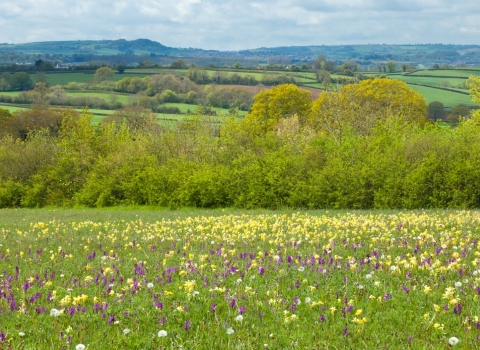Statutory Protected Sites
The sites we manage are important havens for wildlife and many have ‘Statutory Protection’. This means they receive international or national protection by means of certain legislation in recognition of their biodiversity or geology.
Sites of Special Scientific Interest (SSSIs)
SSSIs are designated under the Wildlife & Countryside Act 1981 where they support habitats and/or species of national importance. There are SSSIs in the UK. SSSI represent our best sites for wildlife and geology. Well over half, by area, are internationally important and many play an important part in local culture and economies or provide wonderful opportunities for people to enjoy wildlife and the landscape. The national wildlife and geological features of SSSI’s are irreplaceable parts of our national heritage. These are protected in order to preserve their importance, and to prevent damage and development. We have many incidents were these sites are damaged through illegal off road, dumping waste and development.
Special Areas of Conservation (SACs)
SACs are designated where they support internationally important habitats and/or species listed in the EC Habitats Directive.
Special Protection Areas (SPAs)
SPAs are areas which have been identified as being of international importance for the breeding, feeding, wintering or the migration of rare and vulnerable species of birds found within European Union countries. They are designated under the European ‘Birds Directive 1979’. More information about SPAs can be found on the Natural England website. (There are no SPAs in Warwickshire, Solihull or Coventry)
Ramsar Sites
The Ramsar Convention is an international agreement signed in Ramsar, Iran, in 1971, which provides for the conservation and good use of wetlands. The UK Government ratified the Convention and designated the first Ramsar sites in 1976.
National Nature Reserves (NNRs)
NNRs are designated under section 35 of the Wildlife & Countryside Act 1981. They are owned by or managed through agreements with Natural England.
Local Nature Reserves (LNRs)
All district and county councils have powers to acquire, declare and manage LNRs. Town and parish councils can create LNRs if the district council has given them the power to do this. To qualify for LNR status, a site must be of importance for wildlife, geology, education or public enjoyment. LNRs must be controlled by the local authority through ownership, lease or agreement with the owner.
Non-statutory sites
Sites of Nature Conservation Importance (SNCIs)
We also manage ‘Local Wildlife Sites’ (known as Sites of Nature Conservation Importance or SNCIs in Surrey). These are sites identified at a local level for their conservation value. Many SNCIs can be just as biodiverse as sites with higher levels of protection, however they do not have statutory status and their protection relies on local government policy, which may differ by region.
Found on both public and private land, SNCIs vary in size and shape from ponds, hedgerows and water courses, to larger areas of habitat such as woodlands and grasslands.
SNCIs may support locally or nationally threatened wildlife and play a critical role in the conservation of the UK’s natural heritage. They provide essential wildlife refuges, as well as acting as stepping stones, corridors and buffer zones to link other natural spaces in urban and rural areas.
Other types of designation
Suitable Alternative Natural Greenspace (SANG)
A SANG is a countryside recreational site, created to attract residents of new developments away from designated sites that are protected for their valuable ecology and are sensitive to recreational activities such as dog walking.
SANGs were evolved to protect the Thames-Basin Heaths SPA (much of which lies in Surrey) around 10 years ago and now the concept is spreading to protect more sites across the country. They may be created from existing informal open spaces, ex-agricultural land, woodlands and restored landfill sites and can range in size from just a few hectares to over 100 hectares.
Defra published Local Sites: Guidance on their identification, selection and management in 2006.

